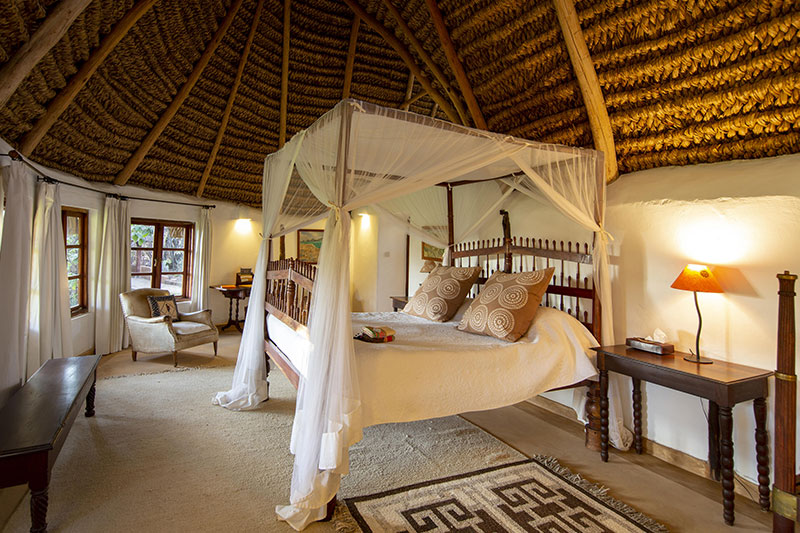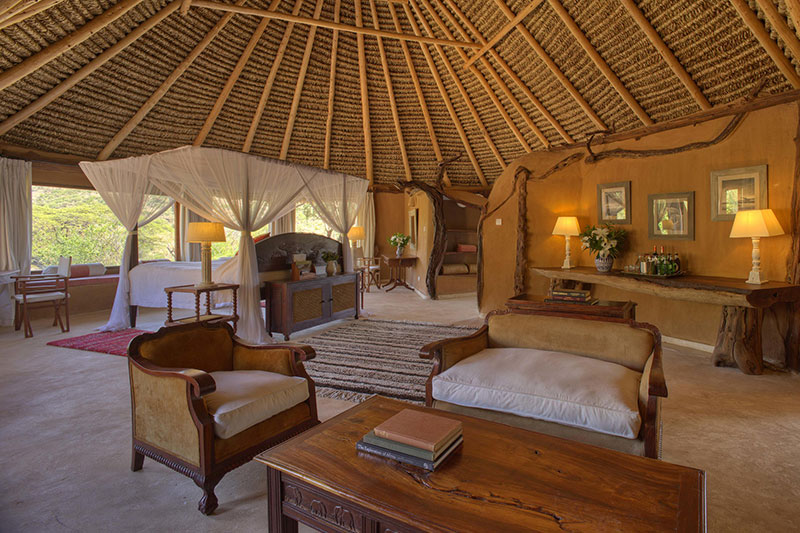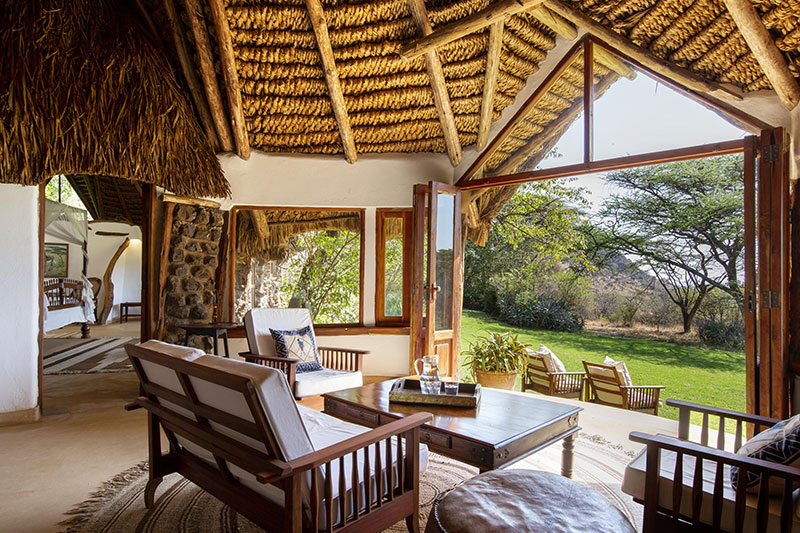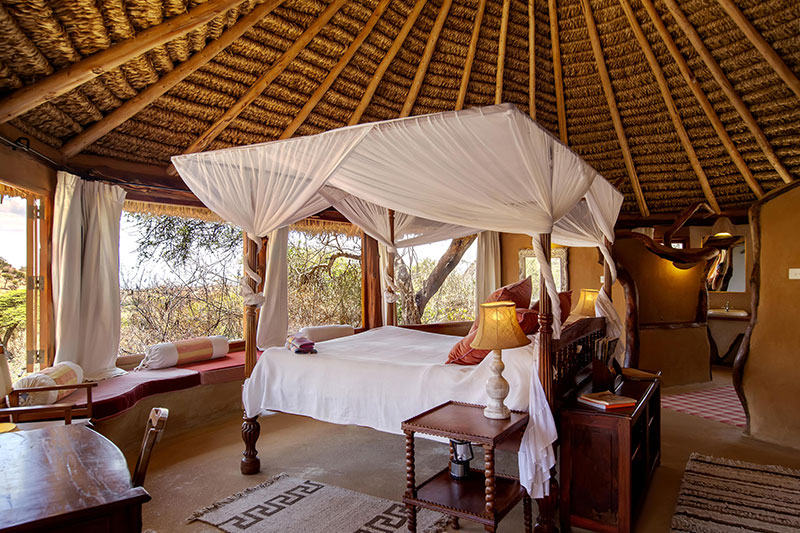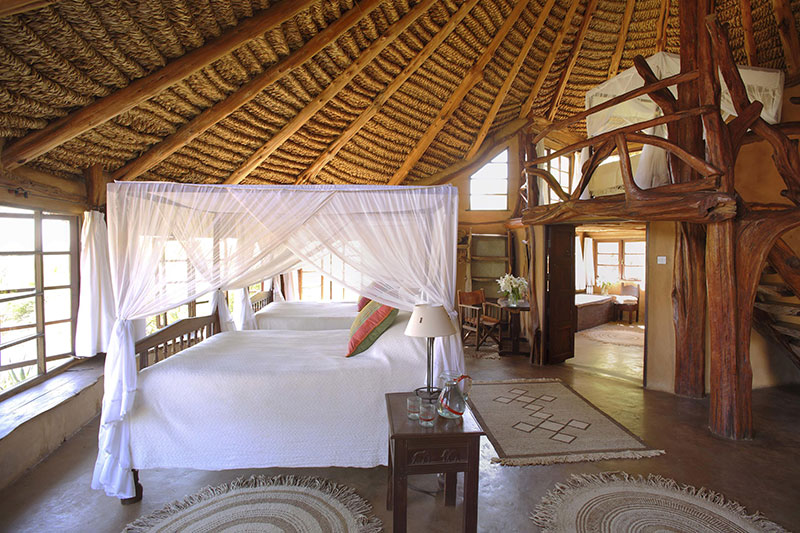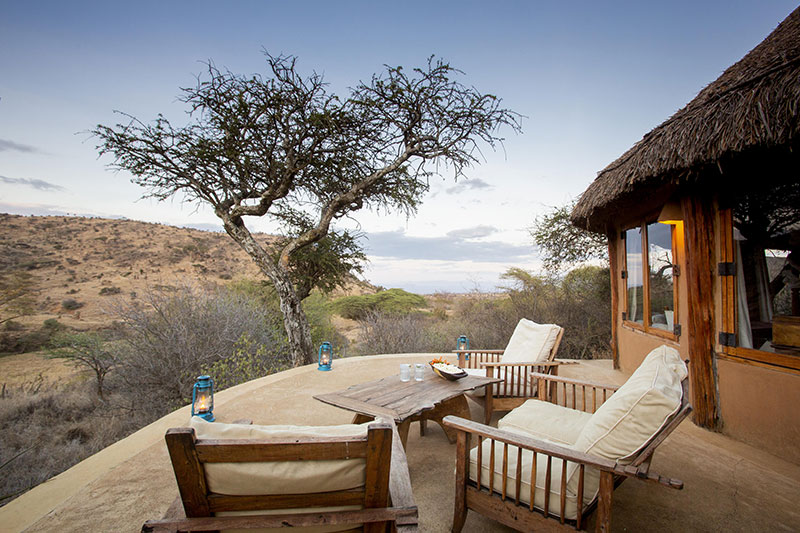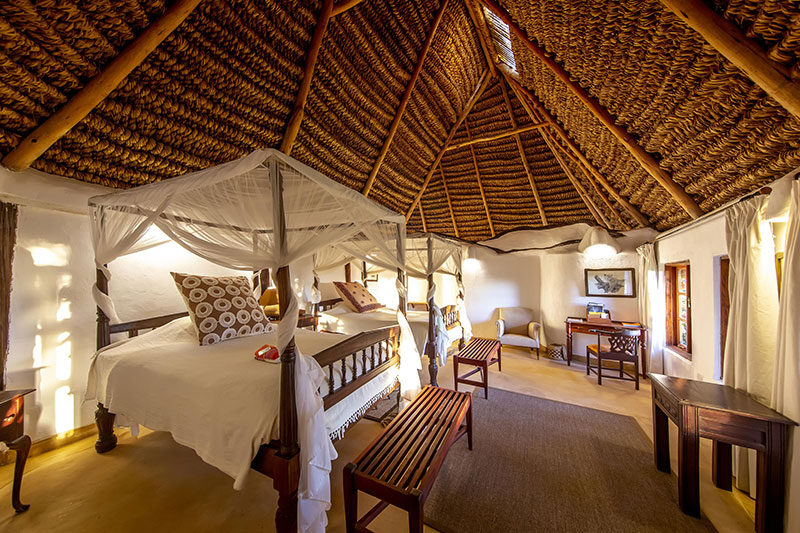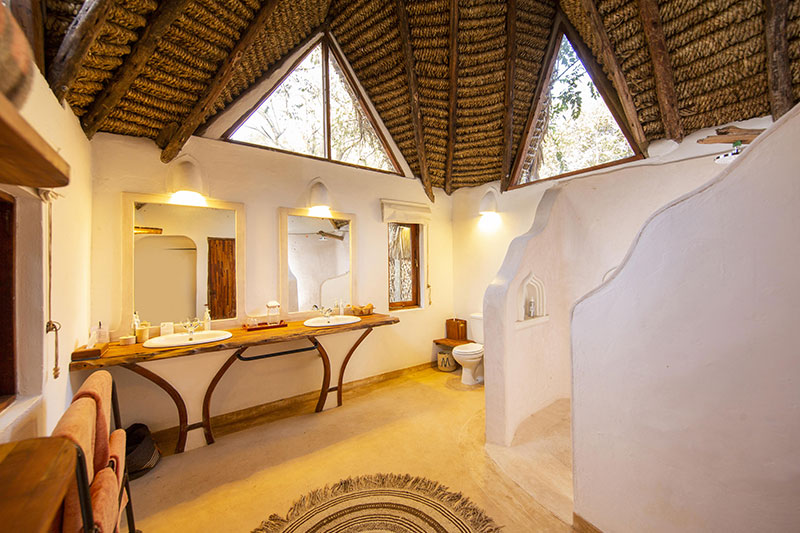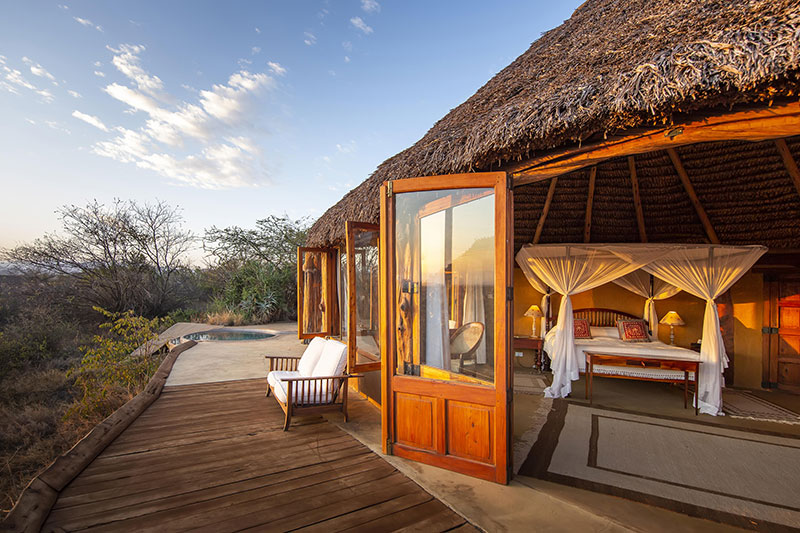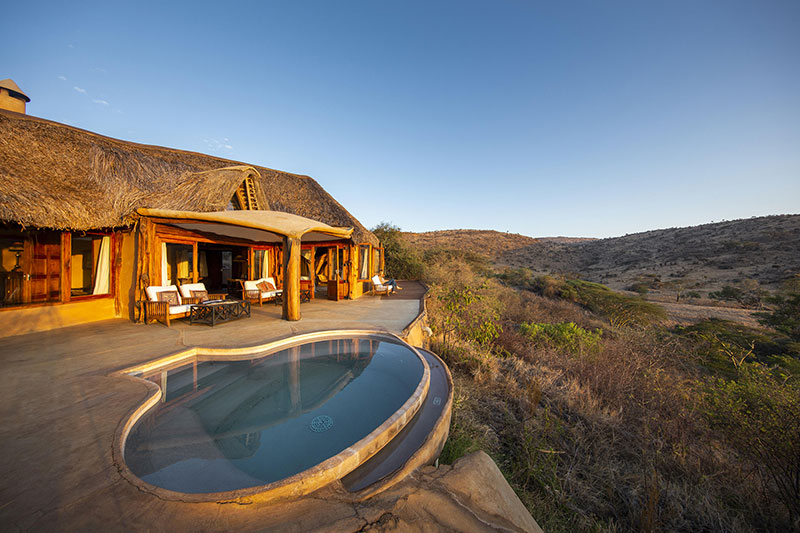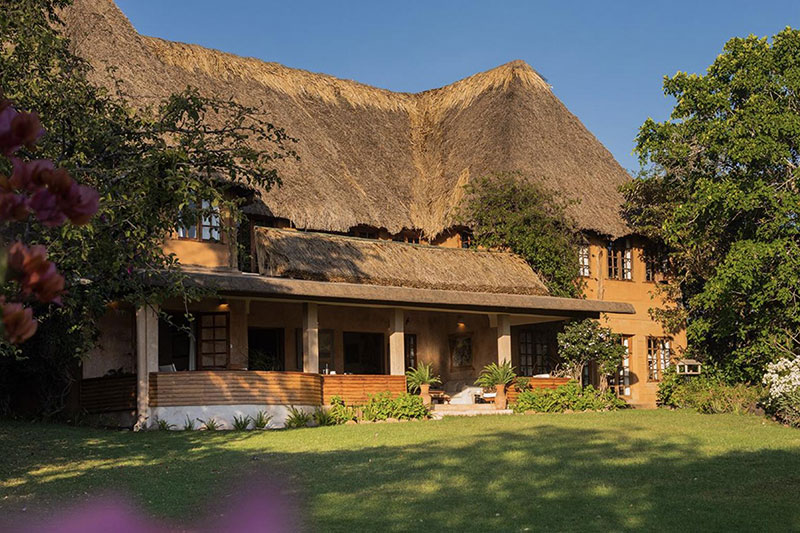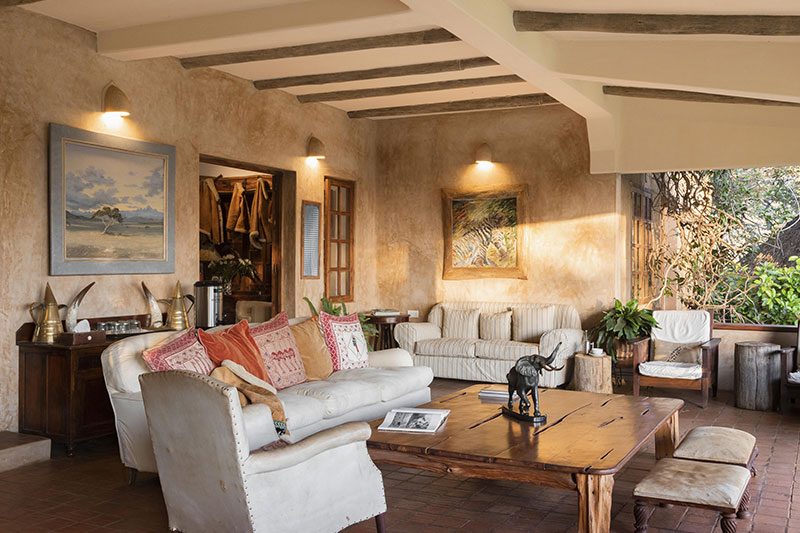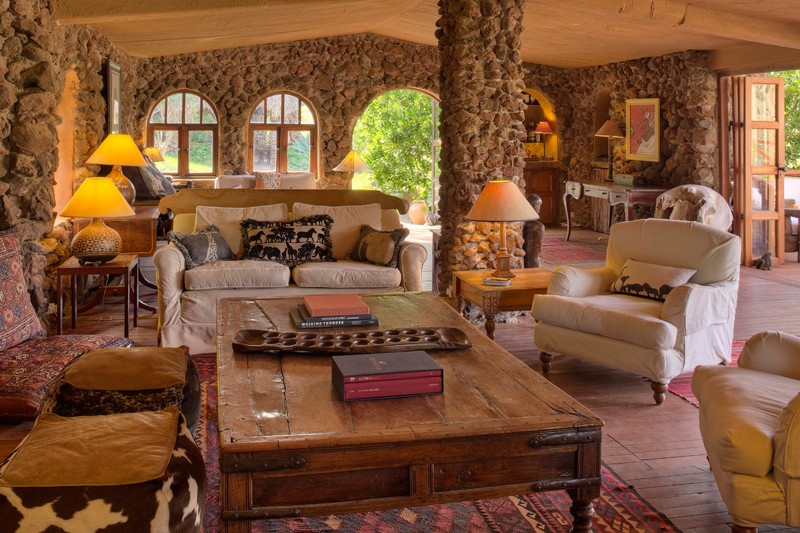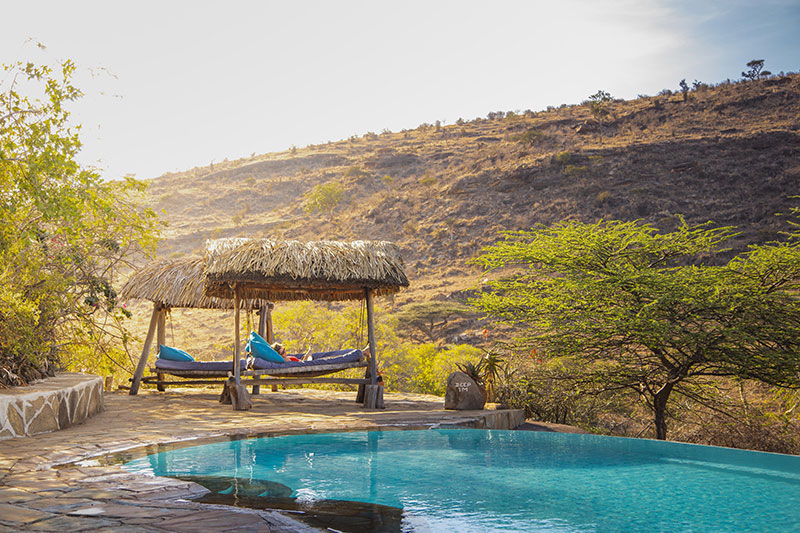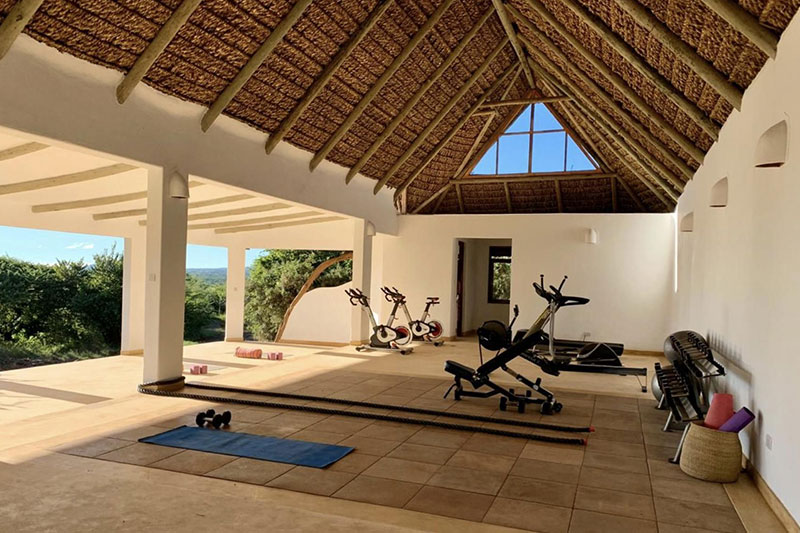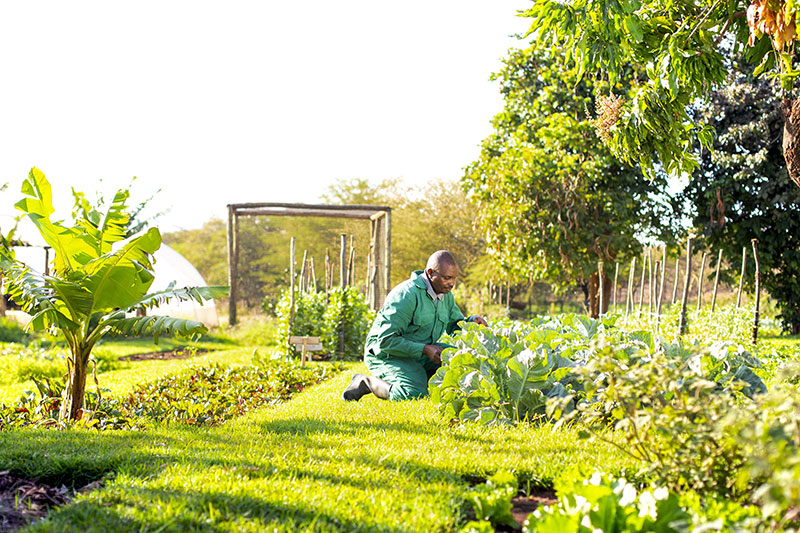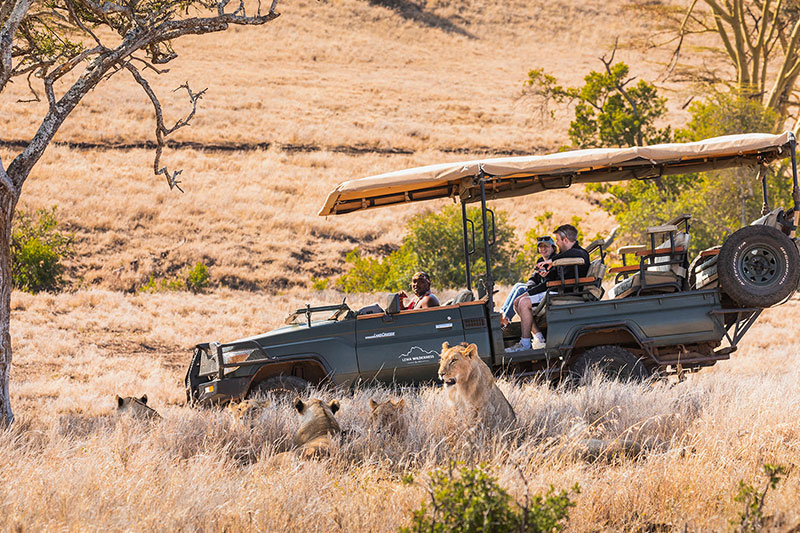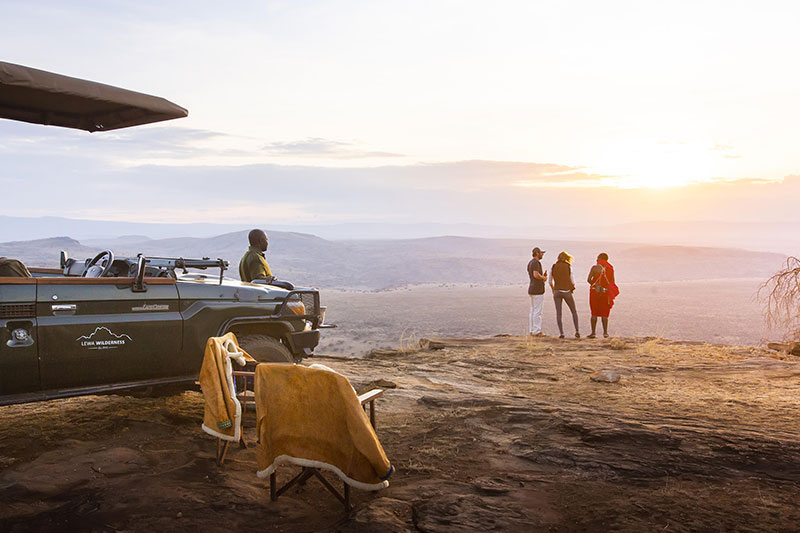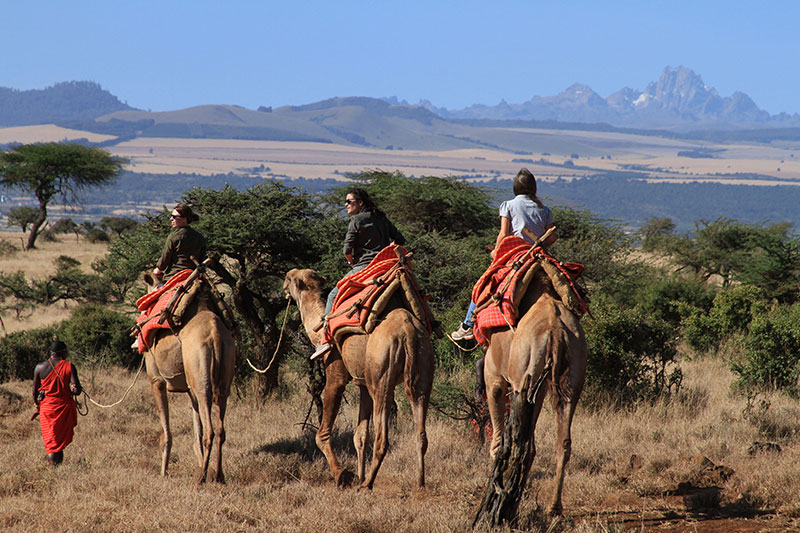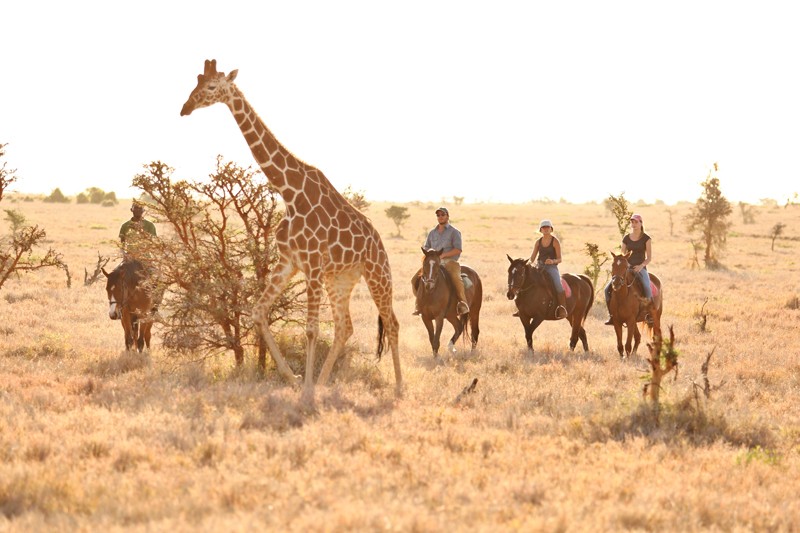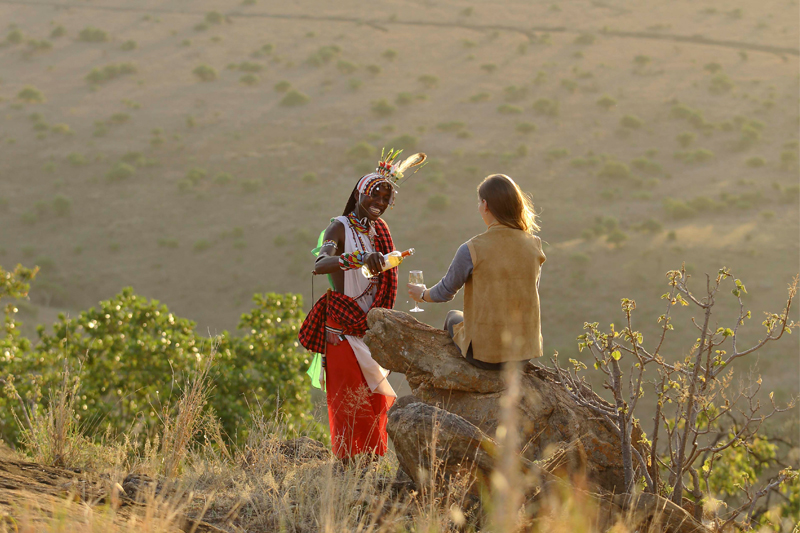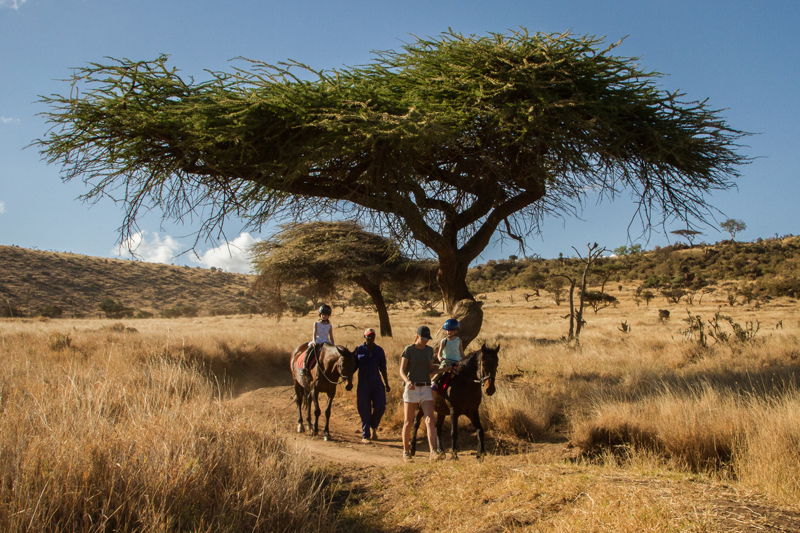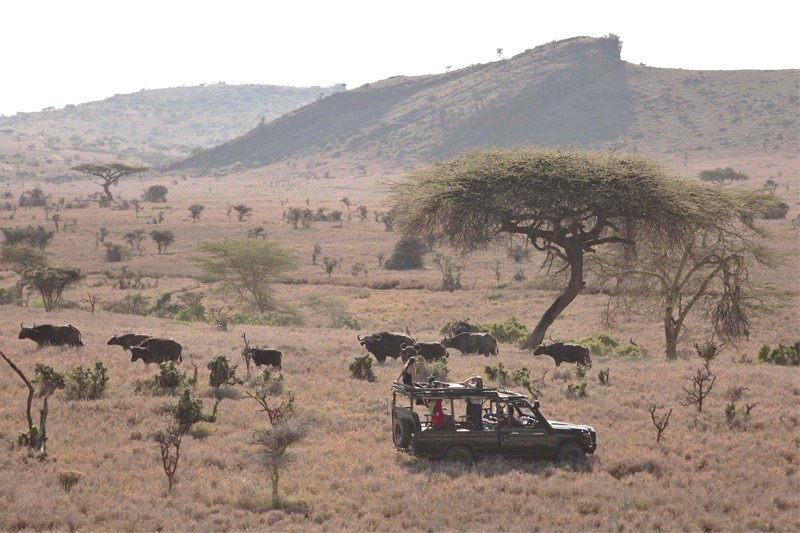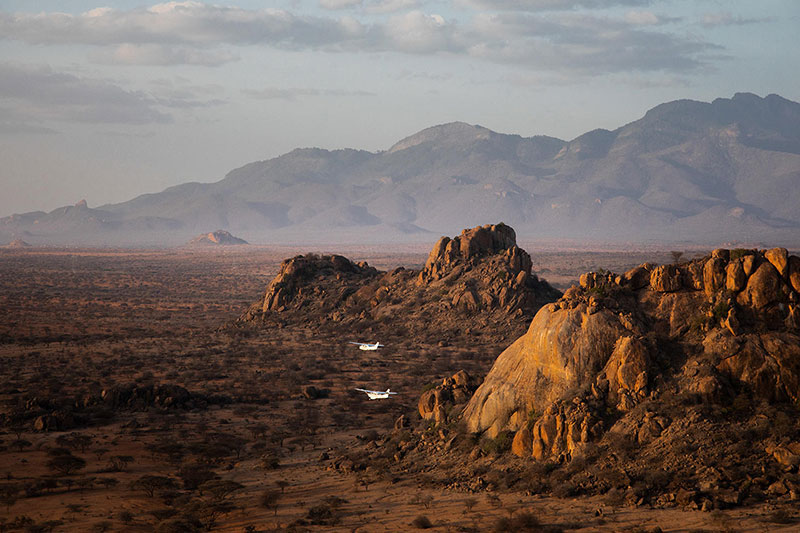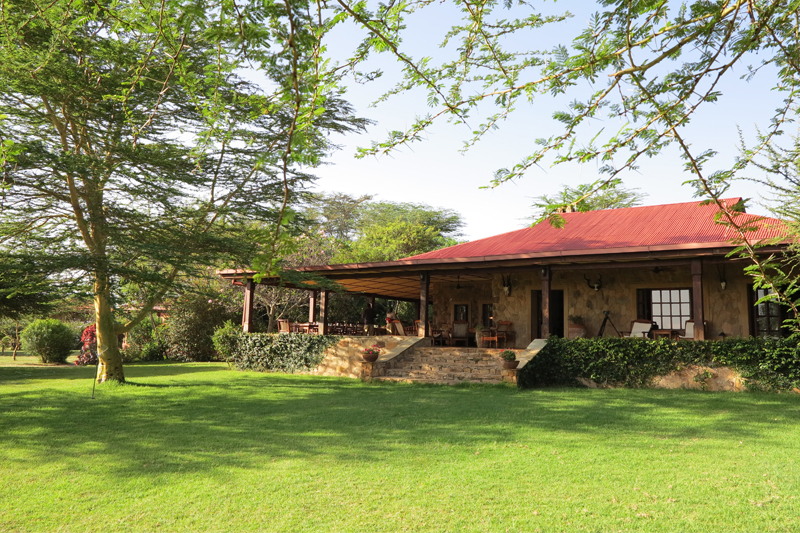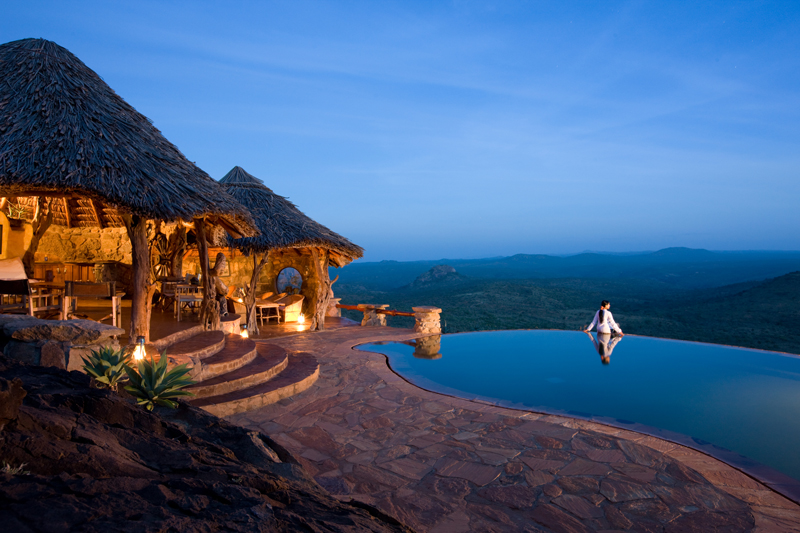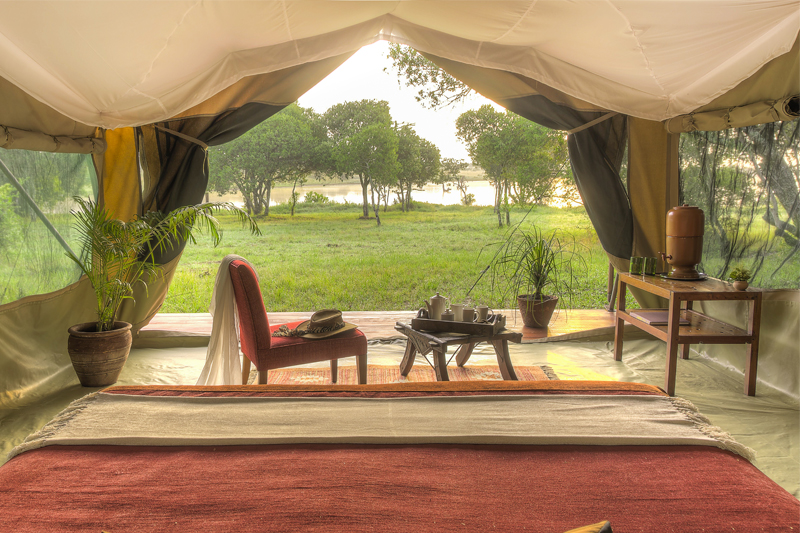Lewa Wilderness
Lewa Wilderness is an established bush homestead property located in the wonderful Lewa Conservancy near Mount Kenya in central Kenya.
Lewa Wilderness is an old favourite and has a very warm, established feel to it. The main homestead, separate central dining/lounge areas and mature gardens create a traditional bush homestead ambiance. Most meals are communal and the management and staff are very friendly and attentive. It can be a pretty social place at times and is suited to travellers who are happy to meet other guests and enjoy sharing their stories. The accommodation is very comfortable and spacious, without being modern or contemporary, with many of the cottages being ideal for families. Lewa Wilderness is a great all round option for enjoying the fantastic game viewing of Lewa combined with the bubbly atmosphere of the lodge.
Rooms
Accommodation at Lewa Wilderness comprises six one bedroom cottages and four two bedroom cottages. All are built from wood, stone and thatch in a traditional Kenya homestead style and offer spacious comfort. The cottages are split between ‘Hillside’ which were built to make the most of the Eastern Marania valley views; and ‘Garden’ which are the original cottages and overlook the lawns next to the main house. Each of the five Hillside Cottages have en suite bathroom facilities, a sitting area, fireplace and verandah, with one cottage having an extra en suite twin bedroom and a private plunge pool. There are three Two Bedroom Garden Cottages which each have two en suite bedrooms sharing a sitting room. The Garden cottages are great for families, friends travelling together and those that wish to be closer to the central areas. There is one One Bedroom Garden Cottage which has two queen beds in the en suite master bedroom, and a further queen bed on a mezzanine level.
Central Areas
Centrally located is a lounge with comfortable chairs, fire place, dining room and an outdoor deck overlooking the riverine forest. There is also a beautiful swimming pool, gym and tennis court.
Facilities
Wi-Fi – Yes
Power for Charging – Yes
Swimming Pool – Yes
Habitat & Wildlife
Lewa Wilderness is located within the Lewa-Borana Conservancies, a 93,000-acre landscape including Lewa Wildlife Conservancy and neighbouring Borana Conservancy, which together create an important wildlife corridor between Mount Kenya and the northern wilderness.
Lewa Wilderness is on the Lewa Wildlife Conservancy which comprises around 48,000 acres of private land (predominantly owned by the Craig family who have been in the area since 1924), and 14,000 acres of national forest. It lies on the transitional zone between the Mount Kenya highlands and the semi-arid savannah to the north at an altitude of between 4,500 and 6,000ft above sea level. Although most of the conservancy is set aside for wildlife, some horticulture, stud cattle and dairy farming practises are still carried out, and furniture making (from local acacia woods) and rug weaving businesses create further employment for the local people. There is a Conservation Centre which is worthwhile visiting.
The habitat is extremely diverse with open grassland interspersed with acacia forests, riverine woodland, rocky gorges and ravines, montane forest and the Lewa swampland. Mount Kenya provides a scenic backdrop to the south.
The history of the Lewa-Borana Conservancies starts at Lewa at the height of the rhino and elephant poaching in the mid-1980s when Anna Mertz asked the Craig family to set aside an area for use as a rhino sanctuary. In 2013 a founding population of 21 black rhinos was introduced to the neighbouring Borana Conservancy. Once they were established, the fence between Borana and Lewa was dropped, forming one landscape which today hosts a thriving population of over 240 rhino (both black and white), making this one of East Africa’s largest continuous rhino habitats. In 2013 Lewa also gained UNESCO World Heritage Site status and is one of only 40 wildlife areas worldwide on the IUCN Green List for well managed conservancies with good governance. While Lewa and Borana remain independent entities, and activities for guests will be on the conservancy where their lodge is located, conservation and community efforts are approached jointly and they are increasingly referred to as the ‘Lewa-Borana Landscape’.
In addition to healthy populations of both black and white rhino, the Lewa-Borana Conservancies are home to around 90% of the world’s population of the rare Grevy’s zebra whilst other animals to be seen include elephant, reticulated giraffe, eland, lion, leopard, cheetah, the Burchell’s zebra, hartebeest, greater kudu, Grant’s gazelle, impala, bushbuck, dik dik, oryx and within the swamp area, the sitatunga. You might also be lucky enough to see the rarer gerenuk. After dark lookout for nocturnally active species such as aardvark, caracal, bat-eared fox, honey badger, porcupine, galago, and white-tailed mongoose. The birdlife is superb with over 440 species recorded – from the ridges, it’s possible to photograph vultures and eagles soaring within a few feet.
Activities
The main activity from Lewa Wilderness is game drives (by day and night) across the abundant Lewa Conservancy. Walking safaris are also possible, often accompanied by camels or you can have a go at riding these slightly uncomfortable creatures! Horse riding is also available across the plains for a different perspective.
Trips to the lodge’s local carpet factory and wood workshop, the Ngare Ndare Forest (where you are able to swim in the river, visit waterfalls and the raised canopy boardwalk) and local villages can also be arranged. For something a little more exhilarating, helicopter excursions around northern Kenya are possible (including fly-fishing on Mount Kenya).
If you are interested, a visit to see the working side of the ranch and conservancy can be arranged, and there is also a prehistoric site on the ranch where Acheulian hand axes can be found scattered on the ground.
If you are interested, a visit to see the working side of the ranch and conservancy can be arranged, and there is also a prehistoric site on the ranch where Acheulian hand axes can be found scattered on the ground.
Seasons
Lewa Wilderness is open all year round, however April, May & November are rainy months.
Lewa Wilderness is an excellent family option, especially if you are looking to combine wonderful game viewing with a fun lodge environment where there is plenty to do in between activities. The Two Bedroom Garden Cottages are ideal for children of all ages and larger families, while the Two Bedroomed Hillside Cottage is perhaps ideal for families with older children (due to there being no barriers to a significant drop from the outside area). Lewa Wilderness does not offer any specific ‘kids club’ attractions, but there is a swimming pool, tennis court, lawns for them to run about on and the enthusiastic guides and staff will interact with children both on activities and whilst in camp. The pool in particular at Lewa Wilderness is certainly a good place to spend time relaxing!
The Lewa-Borana Conservancies conservation success story started here on the Craig family land and is today one of the most successful rhino protection projects in Africa. In addition to conservation efforts, a significant amount of the Conservancy’s work involves working with the communities around Lewa-Borana Landscape to ensure they are benefitting from the wildlife conservation.
Lewa Wilderness, together with other lodges on the Lewa Wildlife Conservancy, supports the Lewa schools health care projects and conservation efforts together. Between Lewa and Borana they assist in community development through conservation education programmes, financial support for many schools, funding teaching salaries and student bursaries as well as the building classrooms and accommodation, digging boreholes and fitting water tanks. They provide access to healthcare, youth empowerment, assist women in small businesses, provide pipelines for clean water projects and support pastoral livelihoods amongst many other initiatives.



